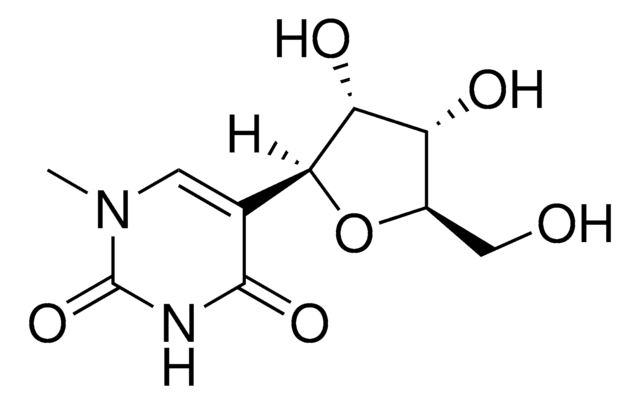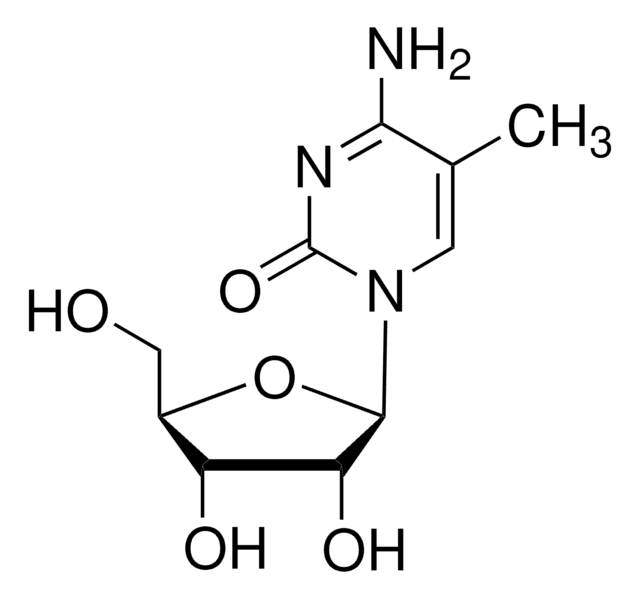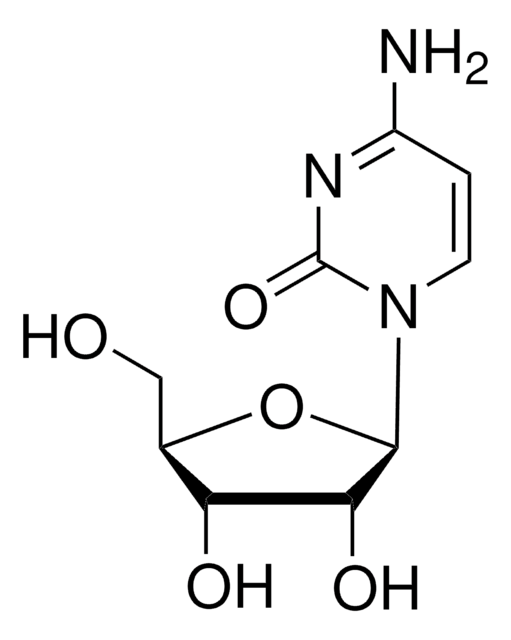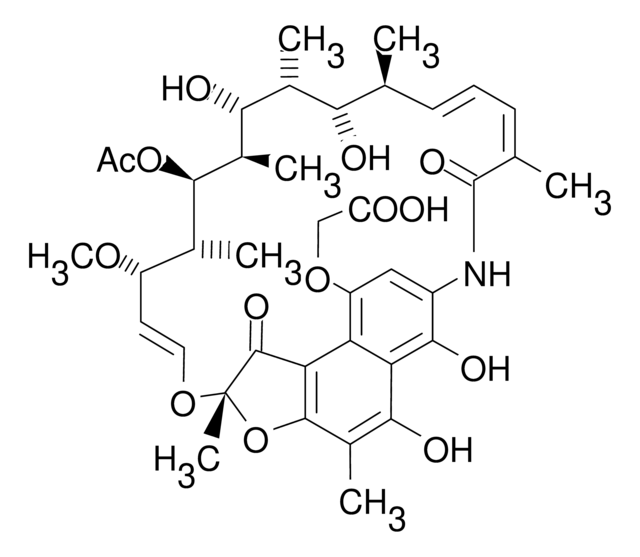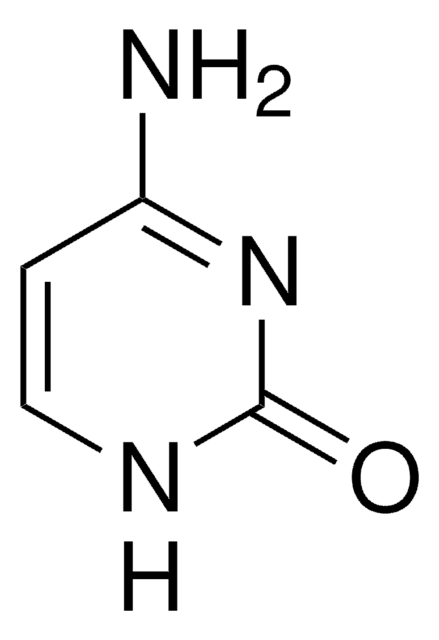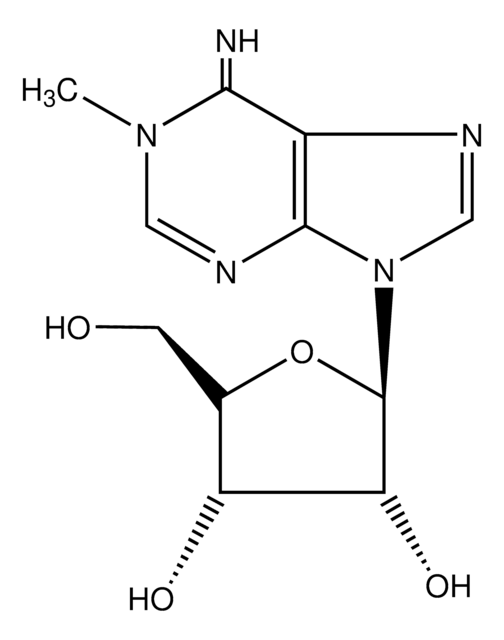Kluczowe dokumenty
SMB00912
Pseudouridine
≥98% (HPLC)
Synonim(y):
Pseudouridine, β-Pseudouridine, ψ-Uridine, 5-(β-D-Ribofuranosyl)uracil
About This Item
Polecane produkty
pochodzenie biologiczne
synthetic (chemical)
Poziom jakości
Próba
≥98% (HPLC)
Formularz
powder
masa cząsteczkowa
244.2
kolor
white to off-white
mp
222 °C ((432 °F ))
rozpuszczalność
water: soluble
temp. przechowywania
2-8°C
ciąg SMILES
[nH]1[c]([nH]cc([c]1=O)[C@@H]2O[C@@H]([C@H]([C@H]2O)O)CO)=O
InChI
1S/C9H12N2O6/c12-2-4-5(13)6(14)7(17-4)3-1-10-9(16)11-8(3)15/h1,4-7,12-14H,2H2,(H2,10,11,15,16)/t4-,5-,6-,7+/m1/s1
Klucz InChI
PTJWIQPHWPFNBW-GBNDHIKLSA-N
Opis ogólny
Zastosowanie
Cechy i korzyści
- High-purity compound suitable for a wide variety of research applications
Inne uwagi
Kod klasy składowania
13 - Non Combustible Solids
Klasa zagrożenia wodnego (WGK)
WGK 3
Temperatura zapłonu (°F)
Not applicable
Temperatura zapłonu (°C)
Not applicable
Wybierz jedną z najnowszych wersji:
Certyfikaty analizy (CoA)
Nie widzisz odpowiedniej wersji?
Jeśli potrzebujesz konkretnej wersji, możesz wyszukać konkretny certyfikat według numeru partii lub serii.
Masz już ten produkt?
Dokumenty związane z niedawno zakupionymi produktami zostały zamieszczone w Bibliotece dokumentów.
Nasz zespół naukowców ma doświadczenie we wszystkich obszarach badań, w tym w naukach przyrodniczych, materiałoznawstwie, syntezie chemicznej, chromatografii, analityce i wielu innych dziedzinach.
Skontaktuj się z zespołem ds. pomocy technicznej
